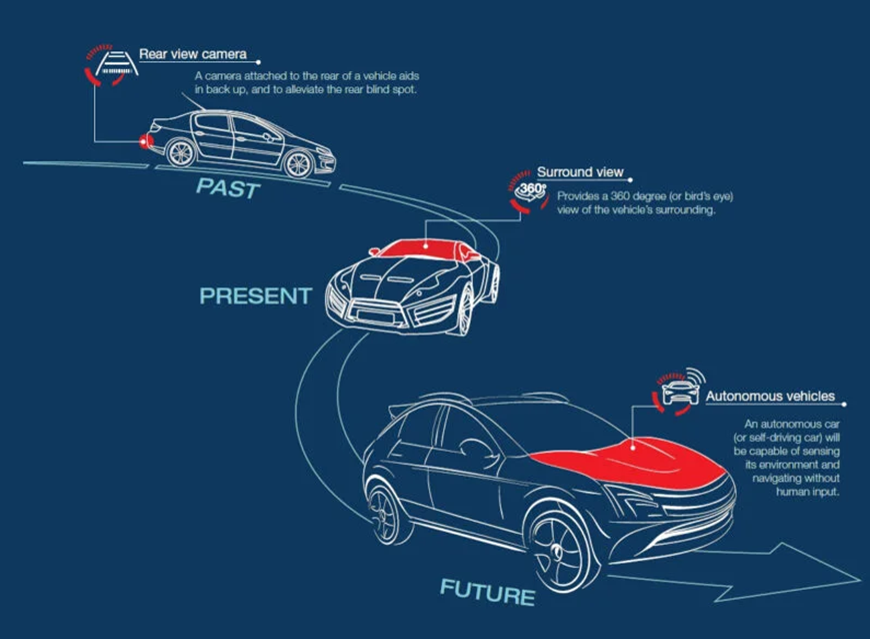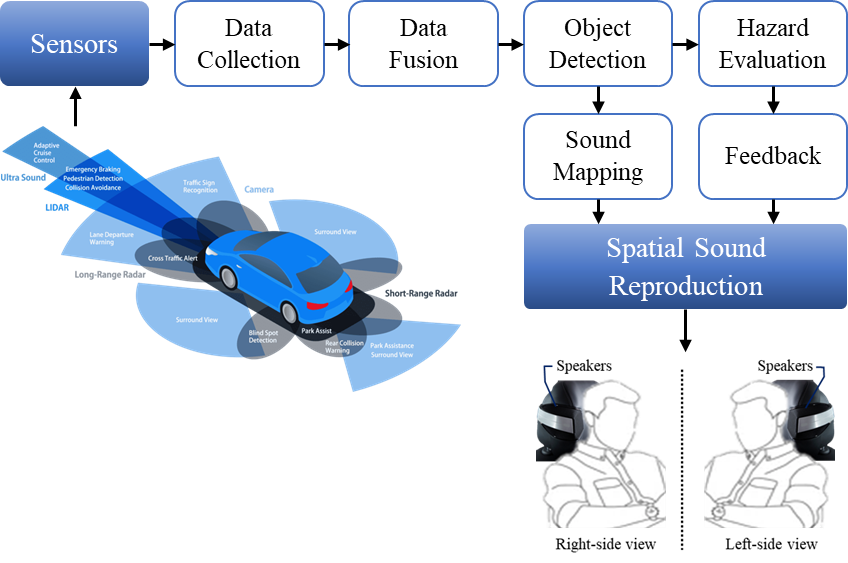Welcome!
Acoustics for:
Assistive solutions for impaired access are crucial for creating an inclusive and sustainable society. These technologies, such as audio-visual aids and adaptive infrastructure, ensure that individuals with impairments can navigate and participate fully in public life. By incorporating eco-friendly, energy-efficient designs, these solutions not only enhance accessibility but also support sustainability goals.
Active Projects
Projects
Driver Assistive system based
on Spatial Audio Rendering and Auralization
Modern roads are increasingly complex environments
requiring drivers to process vast amounts of information. Existing
driver-assist systems predominantly rely on visual and haptic feedback,
diverting the driver’s attention from the road and increasing cognitive
load. The proposed project introduces a driver-assist technology
leveraging spatial audio rendering technology. This system delivers
real-time auralization and auditory feedback to the drivers through
binaural speakers mounted on the driver’s seat headrest. By using data
from built-in cameras, LiDARs, RADARs, and other sensors, the system
creates a spatial soundscape to alert the driver of surrounding road
traffic-vehicles, pedestrians, bicycles, motorbikes, and other road
objects by rendering spatial audio cues. Unlike traditional
driver-assist systems, which rely on visual and haptic feedback, this
system minimizes the need for visual focus on dashboards, enabling the
driver to remain attentive to the road. This proposal outlines the
technical components, algorithms, methods, and necessity for this
technology, along with a detailed flowchart of the process.
The proposed system will:
• Enable drivers to localize road users aurally, such as vehicles,
pedestrians, and bicycles.
• Provide non-intrusive alerts that reduce dependency on visual or
haptic feedback.
• Enhance road safety by improving driver reaction time and situational
awareness.
Objectives
- Detect and classify all relevant road users (vehicles, pedestrians, bicycles)
- Provide real-time spatial audio feedback via headrest speakers.
- Prioritize alerts based on proximity and collision risk.
- Minimizes distractions by eliminating the need for visual displays or physical feedback
- Aligns with natural human auditory capabilities, improving reaction times
- Offers a seamless, immersive experience, making road navigation safer and less stressful
Technical Architecture

WHY This TECHNOLOGY?
Minimized Distraction: Drivers can receive hazard alerts without taking their eyes off the road.
Reduces dependency on dashboard alerts, enabling drivers to focus on the road
Inclusivity: Suitable for visually or hearing-impaired individuals with customizable feedback options.
Enhanced Situational Awareness: Provides real-time, 360-degree spatial auralization, allowing drivers to respond quickly to potential hazards
Reduced Cognitive Load: Utilizes natural human auditory processing, minimizing mental effort compared to visual or haptic systems.
Enables effortless prioritization of critical threats via adaptive audio cues
Enhanced Reaction Time: Addresses blind spots, silent vehicles, and low-visibility conditions effectively
Faster and more intuitive interpretation of auditory cues compared to visual or haptic alerts.
Enhanced Reaction Time: Addresses blind spots, silent vehicles, and low-visibility conditions effectively
Faster and more intuitive interpretation of auditory cues compared to visual or haptic alerts.
Enhanced Reaction Time: Addresses blind spots, silent vehicles, and low-visibility conditions effectively
Faster and more intuitive interpretation of auditory cues compared to visual or haptic alerts.
Enhanced Reaction Time: Addresses blind spots, silent vehicles, and low-visibility conditions effectively
Faster and more intuitive interpretation of auditory cues compared to visual or haptic alerts.